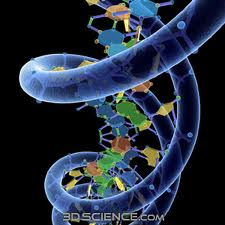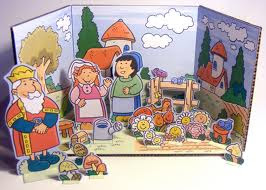Three Dimensional Media
OBJECTIVES
v Analysis
the characteristics of 3d
instructional materials.
v Create 3D
instructional materials
v Demonstrate
proper use of 3D instructional materials.
Three Dimensional Media
is, a tactual quality.
v Gives a
right understanding of real
things.
3D INSTRUCTIONAL
MATERIALS
v Are
useful in the event that real life materials are
impossible
to be brought in the Classroom to provide
students with certain amount of direct, purposeful, rich
and meaningful of teaching experiences.
v Are
usually constructed to allow handling by the
students, except does which are Too large,
too costly, to
rare, or to fragile.
Pioneers in Education in their Education Theory
1.Jean
Piaget
v Use the
methods of instruction through the individualize program, exploration and
experimentation with concert materials that helps
the
child to learn more about the environment .
v With use
of real things, a child is able to compare or contrast things
and make perception about his environment.
2. Maria Montessori
using
real things help promote motor and sensory skills
3. Jerome Brunner
v Proposes
that instruction should proceed from direct experiences ( real things) to iconic representation (pictures) to
symbolic representation (words) for
achieving mastery of task.
KINDS OF3D’S
1.Object
and Specimens
2.Models
and mock-ups
3.Diorama
4.Puppets
5.Resource
Person
1.OBJECTS and SPECIMENS
Objects…
Ø Are
concrete materials such as plants, animals, tools and artifacts used in
providing direct experience.
Specimens…
Is a part
of aspects of some items that is a typical sample of characters of others in
its same class or group.
v in
biology, a specimen is an individual animal, part of
an animal, plant, parts of a plant,
or Microorganism
used as representative to study the
properties of the
whole population of that species
or subspecies.
Points of Consider of Teaching
v Develop a
purpose for using them.
v Provide
opportunities ton learners to work with or to
manipulate the specimens so that they can consider
concepts, process and principles by themselves.
v Present
just enough specimens or object at a
time so as
not to overwhelm the learner.
v Presents
the materials in a dramatic way so as to arouse
and sustain the interest of the learner.
ADVANTAGES:
v These are less abstract and
more concrete
v It attracts learners
attention
v Learners become more familiar with
the objects.
LIMITATIONS
v Needs a bigger
stories
v Prone to possible
damage
v Some object have
limitation
in availability and may not
be easy to be found.
2. Models and Mock-ups
MODELS
v are
scaled replicas of real object.
Examples:
models
cars
airplanes
house
Solar system
MOCK-UPS
v Are
special types of models which are focused
on a specific part of a whole object and
are
workable
v It is
intended to show the essential parts which
are made
detachable.
TYPES:
1.Solid Models- are
mainly used for recognizing external features as in the case of globes and
puppets
2. Cross-section Model/cut away
Models-
Show the internal structures
3. Constructional Model-
which can
be assembled and disassembled to show relationship of parts to whole
4. Working Models-
indicates
how the things being represented operates
ADVANTAGES:
q Allow learners to examine models or mock-ups which
may not be easy in
the real object
q Functional model/mock-ups allow learners to handle
and operate
q After presentation, model can be left on display for a
period of times and allows learners display for a
period of times and
allows learners to independently
study the item at
their own convenience
q Can provide learning experiences that real objects
cannot provide.
q Working models can illustrate
basic operations of a
real device and
provide important details.
WHEN TO USE:
v When
reality is too small .
v When
reality is inaccessible (past and futuristic events):
and when distance is impossible to bridge.
v When
reality is to dangerous (like viewing an
erupting volcano).
v When
reality is unreliable (weather and other
climatic conditions).
v When
reality is too abstract (face relationship,
mathematics).
DISADVANTAGES
v It may be
more expensive that extra care is needed.
v Some
models which are too big may be difficult to
handle for the actual lecture.
v If models
are built to scale. It could be time consuming.
v It might
distort some real objects.
3.
DIORAMA
The term
diorama is a Greek origin which means “to see
through”.
- is
a three-dimensional representation of events, ideas or concepts against a scenic background.
- It is also known as a meaningful exhibit in boxes or cases,
which are portable. It is a miniature scene in three-dimensional treatment that
is meant to replicate reality and cause students to think creatively and
aesthetically.
•A three dimensional representation of events,
ideas or concepts
against a scenic Background.
•Are portable meaningful exhibit in boxes or
cases.
•A miniature scene in 3D treatment that is
meant to replicate
reality and cause students to think creatively.
Four Principal Parts:
q The
painted background.
q The
three-dimensional middle in foregrounds.
q The
figures, constructions, and modeled objects that are



















Walang komento:
Mag-post ng isang Komento